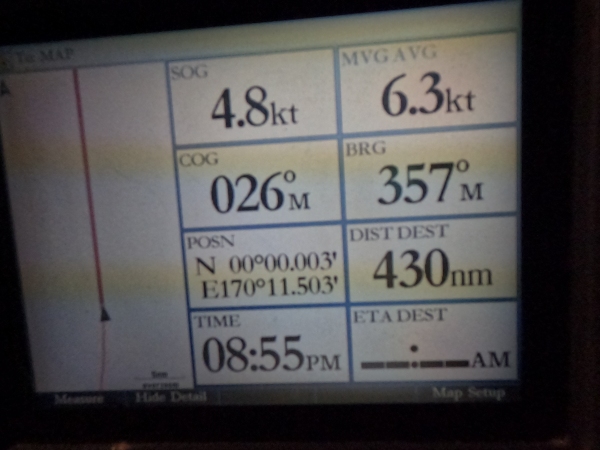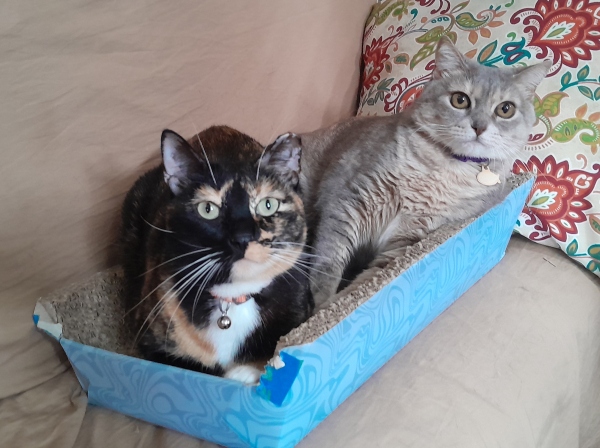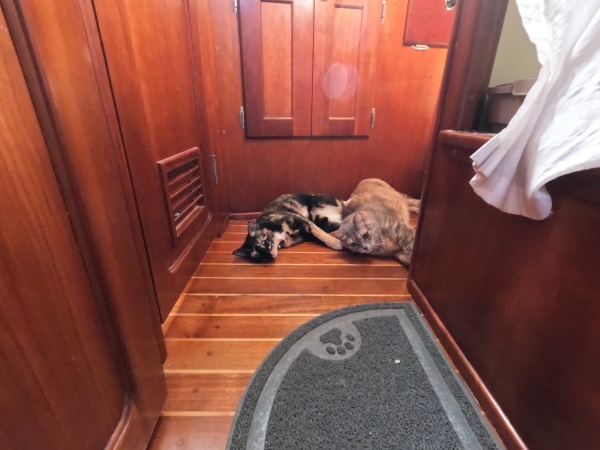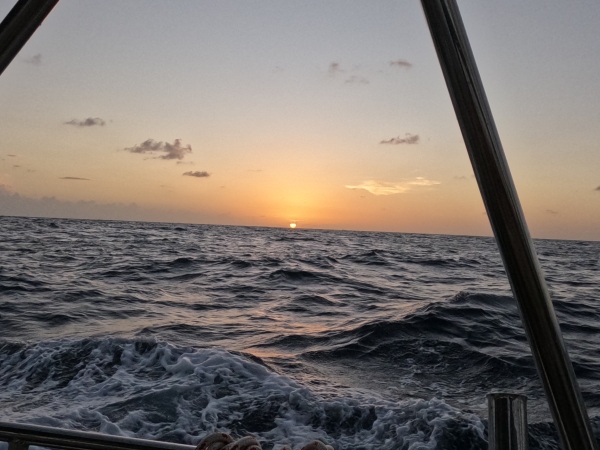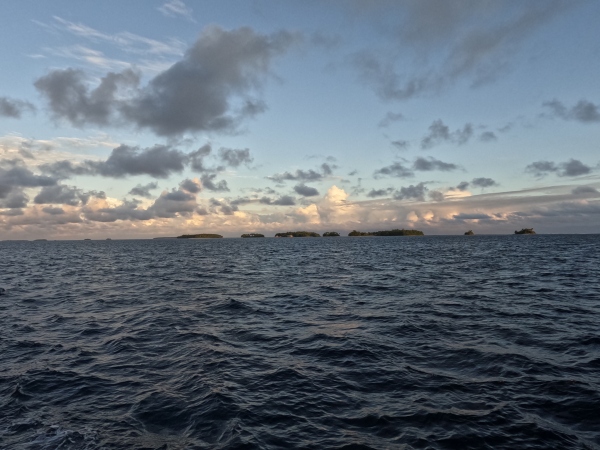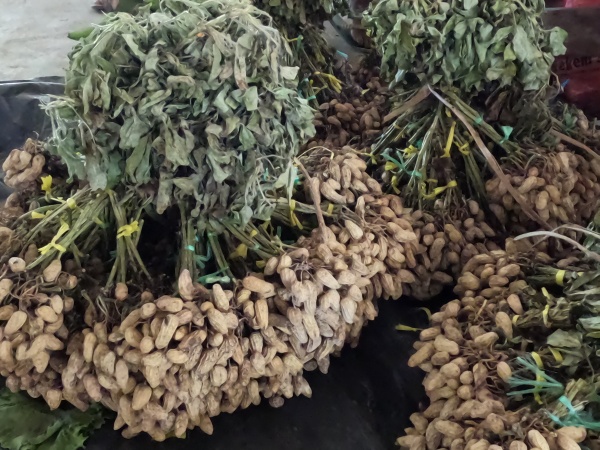
(20251022 to 20251101) “Take it or lose it!” That was the feeling. We had a good weather window to sail from Vanuatu to the Marshall Islands. Our biggest concern was navigating the Inter Tropical Convergence Zone (ITCZ), or Doldrums, a region unpredictable for choppy seas and dead air. Reluctantly, we said “Goodbye” to Vanuatu.
The 1,500-nautical-mile passage from Luganville, Vanuatu, to Majuro, Marshall Islands, became our fifth-longest sail. We covered the distance in eight days of sailing and two days of motoring.
During those eight days of hard sailing, John and I constantly talked about our aching bones and joints. We could barely rest, and every step, inside or outside the boat, required a tight grip on a rail. While changing our sailing angle might have made us more comfortable, we chose to stay on the route to avoid slowing down or using the engine for more days. Today, with Starlink and real-time forecasts, we make decisions based on both our experience and the weather. Whether it’s the right choice, only time will tell.
Battered by the Winds
We sailed, beating into the winds. The cats looked angry but clever, finding the perfect spot to lean, bracing their four legs against the heel of the boat. They barely ate during the journey. However, a flying fish landing on the deck quickly changed that. Happy the cat’s eyes widened, her ears tensed, and she made a move for the ladder. “No, Happy, stay inside!” I picked up the fish, chopped it up, and they feasted. Afterward, a single, crystal-clear fish eyeball was all that remained in the bowl.
The aches were relentless—knees, arms, shoulders, back. Even lying down didn’t help; all our bones and joints screamed.
My watch was 2 am to 8 am. I often saw shooting stars, and each time, I wished for a safe passage with no injuries or man overboard. Cooking was impossible; I only used the stove to boil water for coffee. It was an addiction, and I wondered if the effort was worth it. Once our pre-made meals were gone, we relied on canned food: bean salad, tuna salad, and more.
The night sky was incredible. Countless stars! I always love Venus, the Goddess of Love and Beauty, which appears a few hours before sunrise. On this trip, I also befriended Jupiter, which shone brightly all night.
The Ripped Jib
On the fourth day, an unexpected squall spun the boat 180 degrees, catching our jib sail and causing a small rip. The tear started near a previous repair in Vanuatu, beginning at eight inches but quickly growing to two feet, though still attached in the middle.
They say the hull is the heart of the boat, but the jib is our powerhouse—an engine without fuel, moving our 21-ton “Bunny” toward our destination. We carefully tended the sail to minimize further damage. I didn’t want to imagine the process of repairing it at sea. Fortunately, the wind direction remained steady, reducing the need to furl and unfurl, which keeps us safer.
The jib is over 12 years old. While sailing, John contacted a sailmaker and ordered a replacement, which will be delivered to Guam. In Majuro, we’ll repair the old sail so we can use it to explore many atolls, including Bikini Atoll in the Marshalls and Chuuk Lagoon in Micronesia, before reaching Guam.
Final Approach
We passed the small island nation of Nauru, once one of the world’s richest countries but no longer. Google Maps shows the island as brown due to the extensive mining and export of phosphates. We also sailed past Banaba Island (part of Kiribati), which looked similarly deserted on the satellite image.
The last two days brought direct headwinds. We carefully rolled up the jib and decided to motor into the wind for the final approach.
John was surprised to receive an email that his ordered water membrane had already been delivered to the Marshalls Post Office—about a week from the USA. Since United Airlines flies from Hawaii to the Marshalls, delivery from the US is quicker here.
We made the channel entry around 2 a.m., deciding to navigate in the dark. John used his night vision goggles while I stood on the bow with a flashlight. Though the chart showed four green and three red markers, not all were working. We followed our electronic chart on the iPad.
Inside the atoll, the waves finally stopped. We had seven more mile to the mooring field, but unwilling to pick up a ball in the dark, we decided to float in a big open area. The Mieco Beach Yacht Club would help us with the mooring after sunrise.
We turned off the engine and just floated. It was quiet, calm, and peaceful. The cats slowly opened their eyes, stretched in every direction, and performed their own version of yoga—Cat Posture, Downward Dog, and Boat Posture.
